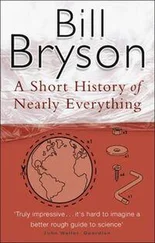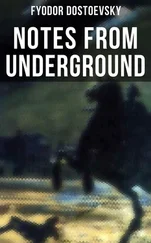Bill Bryson - Notes from a small Island
Здесь есть возможность читать онлайн «Bill Bryson - Notes from a small Island» весь текст электронной книги совершенно бесплатно (целиком полную версию без сокращений). В некоторых случаях можно слушать аудио, скачать через торрент в формате fb2 и присутствует краткое содержание. Жанр: Современная проза, на английском языке. Описание произведения, (предисловие) а так же отзывы посетителей доступны на портале библиотеки ЛибКат.
- Название:Notes from a small Island
- Автор:
- Жанр:
- Год:неизвестен
- ISBN:нет данных
- Рейтинг книги:4 / 5. Голосов: 2
-
Избранное:Добавить в избранное
- Отзывы:
-
Ваша оценка:
- 80
- 1
- 2
- 3
- 4
- 5
Notes from a small Island: краткое содержание, описание и аннотация
Предлагаем к чтению аннотацию, описание, краткое содержание или предисловие (зависит от того, что написал сам автор книги «Notes from a small Island»). Если вы не нашли необходимую информацию о книге — напишите в комментариях, мы постараемся отыскать её.
Notes from a small Island — читать онлайн бесплатно полную книгу (весь текст) целиком
Ниже представлен текст книги, разбитый по страницам. Система сохранения места последней прочитанной страницы, позволяет с удобством читать онлайн бесплатно книгу «Notes from a small Island», без необходимости каждый раз заново искать на чём Вы остановились. Поставьте закладку, и сможете в любой момент перейти на страницу, на которой закончили чтение.
Интервал:
Закладка:
I spent the night in Cirencester and the next day, after a pleasant look around the little Corinium Museum with its outstanding but curiously littleknown collection of Roman mosaics, coins and other artefacts, drove on to Winchcombe to see the real thing in situ. On a hill above Winchcombe, you see, there is a littlevisited site so singular and wonderful that I hesitate even to mention it. Most of the relatively few visitors who intrude upon this tranquil corner of the Cotswolds generally content themselves with a look around Sudeley Castle or a hike to the remote hump of the famous Belas Knap long barrow. But I headed straight for a grassy hillside path called the Salt Way, so named because in medieval times salt was conveyed along it. It was an enchanting walk through open countryside, with long views across sharply defined valleys that seemed never to have seen a car or heard the sound of a chainsaw.
At a place called Cole's Hill the path plunged abruptly into a seriously overgrown wood, dark and primeval in feel and all but impenetrable with brambles. Somewhere in here, I knew, was my goal a site listed on the map as 'Roman villa (remains of)'. For perhaps half an hour, I hacked through the growth with my stick before I came upon the foundations of an old wall. It looked like nothing much the remains of an old pigsty perhaps but a few feet further on, all but obscured by wild ivy, were more low walls, a whole series of them, on both sides of the path. The path itself was paved with flagstones underneath a carpet of wet leaves, and I knew that I was in the villa. In one of the relict chambers, the floor had been carefully covered with plastic fertilizer bags weighted with stones at each corner. This is what I had come to see. I had been told about this by a friend but had never really believed it. For underneath those bags was a virtually complete Roman mosaic, about five feet square, exquisitely patterned and flawlessly preserved but for a tiny bit of fracturing around the edges.
I cannot tell you how odd it felt to be standing in a forgotten wood in what had once been, in an inconceivably distant past, the home of a Roman family, looking at a mosaic laid at least 1,600 years ago when this was an open sunny space, long before this ancient wood grew up around it. It is one thing to see these things in museums, quite another to come upon one on the spot where it was laid. I have no idea why it hadn't been gathered up and taken away to some place like the Corinium Museum. I presume it is a terrible oversight, but I am so grateful to have had the chance to see it. I sat for a long time on a stone, riveted with wonder and admiration. I don't know what seized me more, the thought that people in togas had once stood on this floor chatting in vernacular Latin or that it was still here, flawless and undisturbed, amid this tangle of growth.
This may sound awfully stupid, but for the first time it dawned on me in a kind of profound way that all those Roman antiquities I had gazed at over the years weren't created with a view to ending up one day in museums. Because the mosaic was still in its original setting, because it hadn't been roped off and placed inside a modern building, it was still clearly and radiantly a floor and not merely some diverting artefact. This was something meant to be walked on and used, something that had unquestionably felt the shuffle of Roman sandals. It had a strange kind of spell about it that left me quietly agog.
After a long time, I got up and carefully put back all the fertilizer bags and reweighted them with stones. I picked up my stick, surveyed my work to make sure all was in order, then turned and began the long process of hacking my way back to that strange and careless place that is the twentieth century.
CHAPTER FOURTEEN
I WENT TO MILTON KEYNES, FEELING THAT I OUGHT TO AT LEAST HAVE a look at a new. town. Milton Keynes takes some getting to from Oxford, which is a little odd because it's only just up the road. I selected it as my destination on the basis of a quick look at a road map, assuming that I would, at worst, have to take a train to Bicester or some such place and then another from there. In fact, I had to go all the way back to London, catch an Underground train to Euston and then finally a train to Milton Keynes an overall journey of perhaps 120 miles in order to travel between two towns about thirty miles apart.
It was costly and timeconsuming and left me feeling a tiny bit fractious, not least because the train from Euston was crowded and I ended up sitting facing a bleating woman and her tenyearold son, who kept knocking my shins with his dangling legs and irritating me by staring at me with piggy eyes while picking his nose and eating the bogies. He appeared to regard his nose as a kind of midfaced snack dispenser. I tried to absorb myself in a book, but I found my gaze repeatedly rising against my wishes to find him staring at me with a smug look and a busy finger. It was quite repellent and I was very pleased, when the train finally pulled into Milton Keynes, to get my rucksack down from the overhead rack and drag it across his head as I departed.
I didn't hate Milton Keynes immediately, which I suppose is as much as you could hope for the place. You step out of the station and into a big open square lined on three sides with buildings of reflective glass, and have an instant sense of spaciousness such as you almost never get in English towns. The town itself stood on the slope of a small hill a good halfmile away beyond a network of pedestrian tunnels and over a large open space shared by car parks and those strange newtown trees that never seem to grow. I had the distinct feeling that the next time I passed this expanse of grass and asphalt it would be covered with brick office buildings with coppery windows.
Though I have spent much time wandering through new towns trying to imagine what their creators could possibly have been thinking, I had never been to Milton Keynes. In many ways, it was much superior to any new town I had seen before. The underpasses were faced with polished granite and were largely free of graffiti and the permanent murky puddles that seem to be a design feature of Basingstoke and Bracknell.
The town itself was a strange amalgam of styles. The grassless, shady strips along the centres of the main boulevards gave them a vaguely French air. The landscaped light industrial parks around the fringes looked German. The grid plan and numbered street names recalled America. The buildings were of the featureless sort you find around any international airport. In short, it looked anything but English.
The oddest thing was that there were no shops and noone about. I walked for some distance through the central core of the town, up one avenue and down another and through the shadowy streets that connected them. Every car park was full and there were signs of life behind the gaping office windows, but almost no passing traffic and never more than one or two other pedestrians along the endless vistas of road. I knew there was a vast shopping mall in the town somewhere because I had read about it in Mark Lawson's The Battle for Room Service, but I couldn't for the life of me find it, and I couldn't even find anyone to ask. The annoying thing was that nearly all the buildings looked like they might be shopping malls. I kept spotting likely looking contenders and going up to investigate only to discover that it was the headquarters for an insurance company or something.
I ended up wandering some distance out into a residential area a kind of endless Bovisville of neat yellowbrick homes, winding streets, and pedestrian walkways lined with nevergrow trees but there was still noone about. From a hilltop I spied a sprawl of blue roofs about threequarters of a mile off and thought that might be the shopping mall and headed off for it. The pedestrian walkways,which had seemed rather agreeable to me at first, began to become irritating. They wandered lazily through submerged cuttings, nicely landscaped but with a feeling of being in no hurry to get you anywhere. Clearly they had been laid out by people who had thought of it as a twodimensional exercise. They followed circuitous, seemingly purposeless routes that must have looked pleasing on paper, but gave no consideration to the idea that people, faced with a long walk between houses and shops, would mostly like to get there in a reasonably direct way. Worse still was the sense of being lost in a semisubterranean world cut off from visible landmarks. I found myself frequently scrambling up banks just to see where I was, only to discover that it was nowhere near where I wanted to be.
Читать дальшеИнтервал:
Закладка:
Похожие книги на «Notes from a small Island»
Представляем Вашему вниманию похожие книги на «Notes from a small Island» списком для выбора. Мы отобрали схожую по названию и смыслу литературу в надежде предоставить читателям больше вариантов отыскать новые, интересные, ещё непрочитанные произведения.
Обсуждение, отзывы о книге «Notes from a small Island» и просто собственные мнения читателей. Оставьте ваши комментарии, напишите, что Вы думаете о произведении, его смысле или главных героях. Укажите что конкретно понравилось, а что нет, и почему Вы так считаете.












